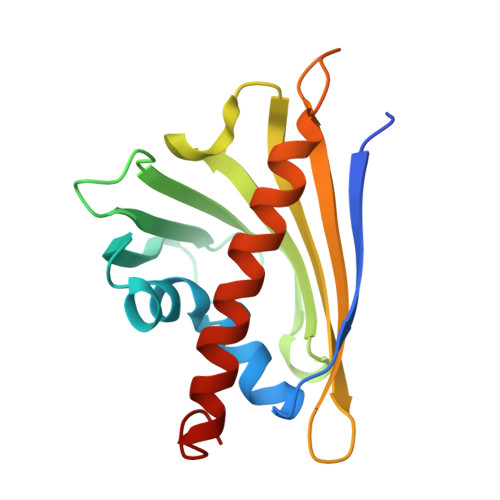Likelihood-based molecular-replacement solution for a highly pathological crystal with tetartohedral twinning and sevenfold translational noncrystallographic symmetry.
Sliwiak, J., Jaskolski, M., Dauter, Z., McCoy, A.J., Read, R.J.(2014) Acta Crystallogr D Biol Crystallogr 70: 471-480
- PubMed: 24531481
- DOI: https://doi.org/10.1107/S1399004713030319
- Primary Citation of Related Structures:
4N3E - PubMed Abstract:
Translational noncrystallographic symmetry (tNCS) is a pathology of protein crystals in which multiple copies of a molecule or assembly are found in similar orientations. Structure solution is problematic because this breaks the assumptions used in current likelihood-based methods. To cope with such cases, new likelihood approaches have been developed and implemented in Phaser to account for the statistical effects of tNCS in molecular replacement. Using these new approaches, it was possible to solve the crystal structure of a protein exhibiting an extreme form of this pathology with seven tetrameric assemblies arrayed along the c axis. To resolve space-group ambiguities caused by tetartohedral twinning, the structure was initially solved by placing 56 copies of the monomer in space group P1 and using the symmetry of the solution to define the true space group, C2. The resulting structure of Hyp-1, a pathogenesis-related class 10 (PR-10) protein from the medicinal herb St John's wort, reveals the binding modes of the fluorescent probe 8-anilino-1-naphthalene sulfonate (ANS), providing insight into the function of the protein in binding or storing hydrophobic ligands.
Organizational Affiliation:
Center for Biocrystallographic Research, Institute of Bioorganic Chemistry, Polish Academy of Sciences, Noskowskiego 12/14, 61-704 Poznan, Poland.

















